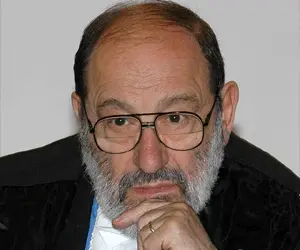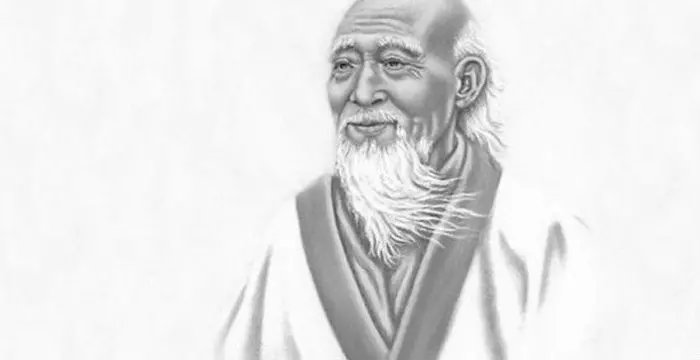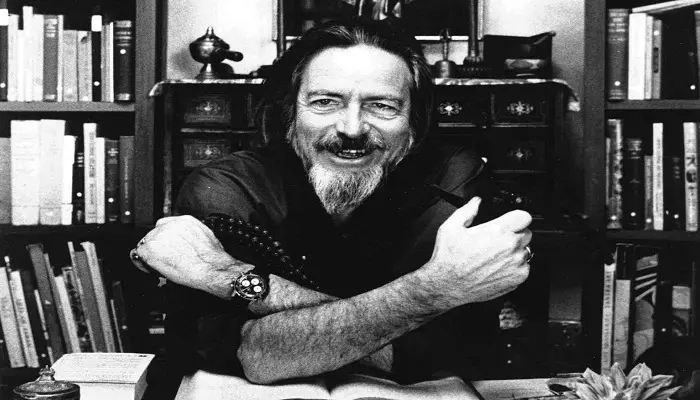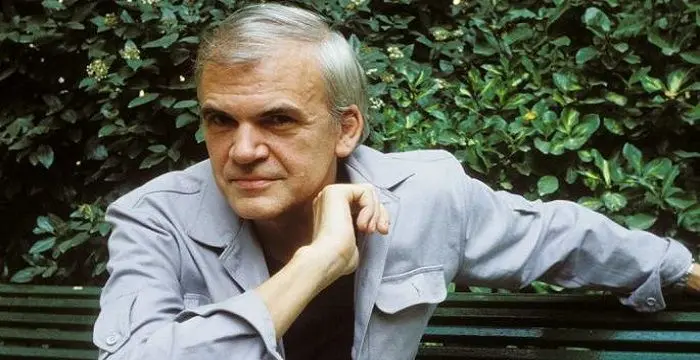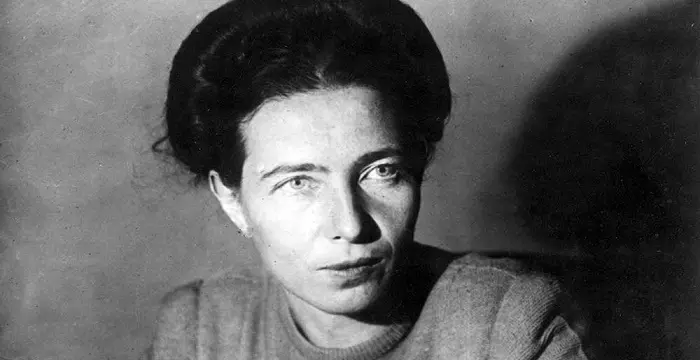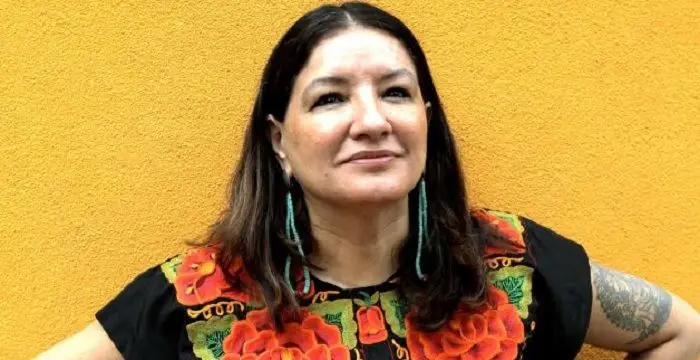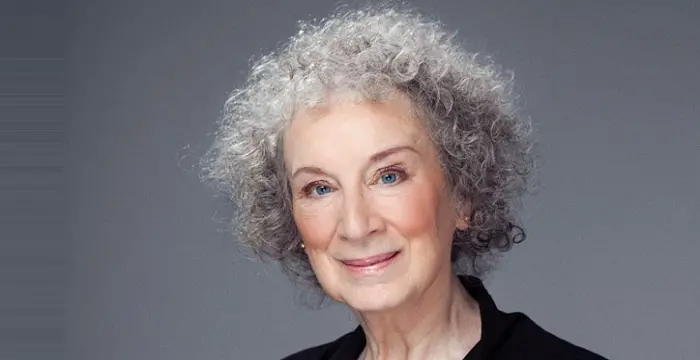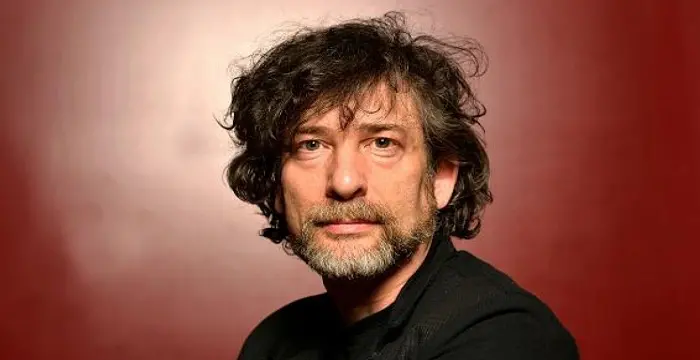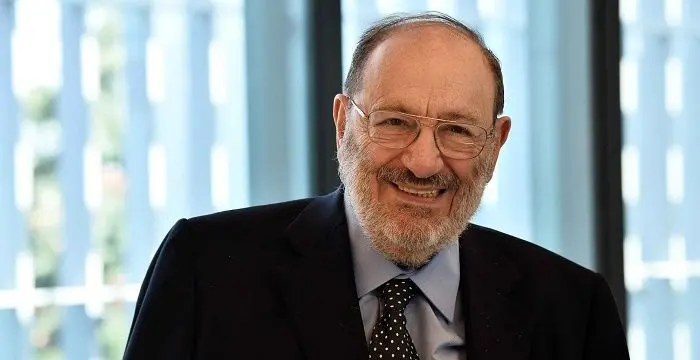
Umberto Eco - Semiotician, Timeline and Life
Umberto Eco's Personal Details
Umberto Eco was an Italian essayist, philosopher, novelist and literary critic, known for his pioneering novel ‘The Name of the Rose’
| Information | Detail |
|---|---|
| Birthday | January 5, 1932 |
| Died on | February 19, 2016 |
| Nationality | Italian |
| Famous | Intellectuals & Academics, Philosophers, Novelists, Essayists, ENFP, Semiotician |
| Spouses | Renate Ramge |
| Universities |
|
| Birth Place | Alessandria, Italy |
| Religion | Atheist |
| Gender | Male |
| Father | Giulio Eco |
| Mother | Giovanna Bisio |
| Sun Sign | Capricorn |
| Born in | Alessandria, Italy |
| Famous as | Italian Semiotician, Philosopher |
| Died at Age | 84 |
Umberto Eco's photo
Who is Umberto Eco?
Umberto Eco was an Italian essayist, philosopher, novelist and literary critic, known for his pioneering novel ‘The Name of the Rose’. He was a renowned researcher and writer in the field of aesthetics and semiotics. His father wanted him to become a lawyer but Eco pursued medieval philosophy and literature from the University of Turin. After that he worked as a cultural editor at the RAI. He wrote six fiction novels and many essays on contemporary semiotics. A number of his works have been translated in many foreign languages. His first fictional novel ‘The Name of the Rose’ established him firmly in the international literary scenario. He has always worked with a queer balance between history, reality and fantasy in all of his fictional work. His contribution to the mass media culture is immense through his essays such as ‘Fenomenologia di Mike Bongjorno (Phenomenology of Mike Bongjorno). He was honored with doctorates from respected literary institutions like Indiana University, Rutgers University, etc.
// Famous Intellectuals & Academics
Bertil Gotthard Ohlin
Bertil Gotthard Ohlin was a famous Swedish economist. This biography profiles his childhood, family life & achievements.
Emily Greene Balch
Emily Greene Balch was an American economist, sociologist and pacifist who won the 1946 Nobel Peace Prize. This biography of Emily Greene Balch provides detailed information about her childhood, life, achievements, works & timeline.
Martin Buber
One of the greatest philosophers to have ever walked on earth, Martin Buber contributions to philosophy is a long-standing one. Explore all about his profile, childhood, life and timeline here.
Childhood & Early Life
Umberto Eco was born on January 5, 1932 in Alessandria, in the Piedmont region in the northern Italy. His father, Giulio, was an accountant by profession and served in three wars in his lifetime and his mother, Giovanna, during those years moved with Eco to Piedmontese.
Eco’s father wanted him to become a lawyer but he took up medieval philosophy and literature from the University of Turin and wrote thesis on Thomas Aquinas, and earned his Laurea in philosophy in the year of 1954.
Career
After finishing his studies at the University of Turin, Eco worked as a cultural editor at the state broadcasting station called the Radiotelevisione Italiana (RAI). Around the same time, he kept lecturing at the Turin University, as a guest lecturer.
In 1956, his first book called ‘II problema estetico in San Tommaso’was published. The book was an extension of his doctoral thesis, which was influenced by many artists, writers, musicians and painters that he was friends with at RAI.
In 1959, his second book ‘Sviluppo dell’estetica medieval (The Development of Medieval Aesthetics)’ was published. This book made him renowned as a prolific thinker of medieval philosophy.
In 1959, he became the senior non-fiction editor at the Bompiani publishinh house, Milan.
In 1962, his essay called ‘Opera aperta (The Open Work)’ was published. He professed in his work that literature is limiting and gives you a unidirectional meaning of life and art, which makes it a closed text while essays and open texts are more open to individual meaning and understanding.
Throughout late 1950s and 1960s, a lot of Eco’s mass media and culture work was published in newspapers and journals of Italy. His essay ‘Fenomenologia di Mike Bongjorno (Phenomenology of Mike Bongjorno) became his famous work during this time.
From 1963-1967, his works like ‘Diario minimo’ and ‘Apocalittici e integrati’ was published. During this time he gave his famous lecture ‘Towards a Semiological Guerilla Warfare’, which influenced the mainstream mass media cultutre.
From 1967-1997, many of his books were published that portrayed his thinking towards contemporary semiotics. Some of these works were ‘La struttura assente (The Absent Structure)’, ‘A Theory of Semiotics’, ‘The Role of the Reader’, ‘Semiotics and Philosophy of L+anguage’, ‘The Limits of Interpretation’, ‘Kant and the Platypus’.
In 1980, he wrote his first historical fiction called ‘The Name of the Rose’, which was a historical mystery set in the 14th century. The book was an indirect tribute to one of the influences in Eco life, Jorge Luis Borges. It was made into a motion picture starring Sean Connery.
In 1988, he wrote a novel called ‘Foucault’s Pendulum’. The novel is about three under-employed editors from a small publishing house who design a conspiracy theory to amuse themselves and how they slowly get consumed in it.
In 1994, he wrote ‘The Island of the Day Before’, which was set in the 17th century. The main protagonist in the book is obsessed with his past and the adventures he had before with the sea.
In 2000, ‘Baudolino’ was published. It is the story of a knight called Baudolino who saves a historian and tells him the story of his magnanimous life which is of course full of historical exaggeration, leaving the historian and the reader unsure of how much of it is a lie.
In 2005, he published his book called ‘The Mysterious Flame of Queen Loana’, which has an old bookseller its main protagonist who is suffering from partial memory loss and struggles to recuperate his past.
In 2010, Eco’s 6th novel called ‘The Prague Cemetery’ was published. The book dwells into the past historical events that led to the rise of Jewish hatred. It portrays the rise of modern time anti-Semitism.
He was a professor emeritus at the University of Bologna, from 2008 till his death.
Personal Life & Legacy
In 1962, Eco got married to Renate Ramge who was a German art teacher. They both had two children together, a son and a daughter.
Umberto Eco died of pancreatic cancer on February 19, 2016, at the age of 84.
Trivia
He had a vacation home in Urbino and an apartment in Milan and had a library in his apartment that had at least 30,000 books in it.
He hoften teamed up with his friend Dr. Thomas A. Sebeok on many of his works, lectures and novels.
He was a member of the Italian skeptic organization CICAP.
// Famous Philosophers
Martin Buber
One of the greatest philosophers to have ever walked on earth, Martin Buber contributions to philosophy is a long-standing one. Explore all about his profile, childhood, life and timeline here.
Lao Tzu (Laozi)
Lao Tzu was a legendary Chinese philosopher who wrote the important “Daodejing”. This biography profiles his childhood, life, career, achievements and timeline.
Alan Watts
Alan Watts was a famous British philosopher known for his Zen teachings and interpretations of Eastern philosophy. Read more about this great philosopher in the following article.
Umberto Eco's awards
| Year | Name | Award |
|---|---|---|
Other | ||
| 0 | 1989 - Bancarella Prize | |
| 0 | 1981 - Strega Prize | |
| 0 | 2001 - Austrian State Prize for European Literature | |
| 0 | 2000 - The VIZE 97 Prize | |
Umberto Eco biography timelines
- // 5th Jan 1932Umberto Eco was born on January 5, 1932 in Alessandria, in the Piedmont region in the northern Italy. His father, Giulio, was an accountant by profession and served in three wars in his lifetime and his mother, Giovanna, during those years moved with Eco to Piedmontese.
- // 1954Eco’s father wanted him to become a lawyer but he took up medieval philosophy and literature from the University of Turin and wrote thesis on Thomas Aquinas, and earned his Laurea in philosophy in the year of 1954.
- // 1956In 1956, his first book called ‘II problema estetico in San Tommaso’was published. The book was an extension of his doctoral thesis, which was influenced by many artists, writers, musicians and painters that he was friends with at RAI.
- // 1959In 1959, his second book ‘Sviluppo dell’estetica medieval (The Development of Medieval Aesthetics)’ was published. This book made him renowned as a prolific thinker of medieval philosophy.
- // 1959In 1959, he became the senior non-fiction editor at the Bompiani publishinh house, Milan.
- // 1962In 1962, his essay called ‘Opera aperta (The Open Work)’ was published. He professed in his work that literature is limiting and gives you a unidirectional meaning of life and art, which makes it a closed text while essays and open texts are more open to individual meaning and understanding.
- // 1962In 1962, Eco got married to Renate Ramge who was a German art teacher. They both had two children together, a son and a daughter.
- // 1963 To 1967From 1963-1967, his works like ‘Diario minimo’ and ‘Apocalittici e integrati’ was published. During this time he gave his famous lecture ‘Towards a Semiological Guerilla Warfare’, which influenced the mainstream mass media cultutre.
- // 1967 To 1997From 1967-1997, many of his books were published that portrayed his thinking towards contemporary semiotics. Some of these works were ‘La struttura assente (The Absent Structure)’, ‘A Theory of Semiotics’, ‘The Role of the Reader’, ‘Semiotics and Philosophy of L+anguage’, ‘The Limits of Interpretation’, ‘Kant and the Platypus’.
- // 1980In 1980, he wrote his first historical fiction called ‘The Name of the Rose’, which was a historical mystery set in the 14th century. The book was an indirect tribute to one of the influences in Eco life, Jorge Luis Borges. It was made into a motion picture starring Sean Connery.
- // 1988In 1988, he wrote a novel called ‘Foucault’s Pendulum’. The novel is about three under-employed editors from a small publishing house who design a conspiracy theory to amuse themselves and how they slowly get consumed in it.
- // 1994In 1994, he wrote ‘The Island of the Day Before’, which was set in the 17th century. The main protagonist in the book is obsessed with his past and the adventures he had before with the sea.
- // 2000In 2000, ‘Baudolino’ was published. It is the story of a knight called Baudolino who saves a historian and tells him the story of his magnanimous life which is of course full of historical exaggeration, leaving the historian and the reader unsure of how much of it is a lie.
- // 2005In 2005, he published his book called ‘The Mysterious Flame of Queen Loana’, which has an old bookseller its main protagonist who is suffering from partial memory loss and struggles to recuperate his past.
- // 2008He was a professor emeritus at the University of Bologna, from 2008 till his death.
- // 2010In 2010, Eco’s 6th novel called ‘The Prague Cemetery’ was published. The book dwells into the past historical events that led to the rise of Jewish hatred. It portrays the rise of modern time anti-Semitism.
- // 19th Feb 2016Umberto Eco died of pancreatic cancer on February 19, 2016, at the age of 84.
// Famous Novelists
Charles Bukowski
Charles Bukowski was a German-born American novelist, short story writer and poet. With this biography, learn in details about his childhood, life, works, career and timeline
Milan Kundera
Milan Kundera is a Czech-born French writer known for his erotic and political writings. This biography of Milan Kundera provides detailed information about his childhood, life, achievements, works & timeline.
Simone de Beauvoir
Simone de Beauvoir was an eminent French writer, intellectual, activist, and philosopher. This biography profiles her childhood, life, thoughts, achievements and timeline.
Sandra Cisneros
Sandra Cisneros is an American writer known for audaciously penning the realities and expectations from females in US and Mexico. This biography provides detailed information about her childhood, life, achievements, works & timeline
Margaret Atwood
Margaret Atwood is a Canadian writer, best known for her novels, short stories and poems. This biography of Margaret Atwood provides detailed information about her childhood, life, achievements, works & timeline.
Neil Gaiman
Neil Gaiman is an English writer of novels, short stories, children’s books and other literature. This biography provides detailed information about his childhood, life, achievements, works & timeline.
Umberto Eco's FAQ
What is Umberto Eco birthday?
Umberto Eco was born at 1932-01-05
When was Umberto Eco died?
Umberto Eco was died at 2016-02-19
Where was Umberto Eco died?
Umberto Eco was died in Milan, Lombardy, Italy
Which age was Umberto Eco died?
Umberto Eco was died at age 84
Where is Umberto Eco's birth place?
Umberto Eco was born in Alessandria, Italy
What is Umberto Eco nationalities?
Umberto Eco's nationalities is Italian
Who is Umberto Eco spouses?
Umberto Eco's spouses is Renate Ramge
What was Umberto Eco universities?
Umberto Eco studied at University of Turin - Professor of Semiotics, University of Bologna
What is Umberto Eco's religion?
Umberto Eco's religion is Atheist
Who is Umberto Eco's father?
Umberto Eco's father is Giulio Eco
Who is Umberto Eco's mother?
Umberto Eco's mother is Giovanna Bisio
What is Umberto Eco's sun sign?
Umberto Eco is Capricorn
How famous is Umberto Eco?
Umberto Eco is famouse as Italian Semiotician, Philosopher
